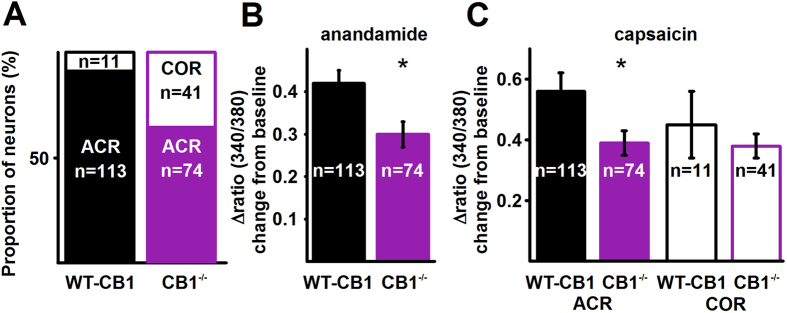Figure 3. Deletion of the CB1 receptor reduces both anandamide- and capsaicin-evoked responses in ACR neurons and changes the ACR – COR ratio.
(A) Conventional ratiometric approach was used to find the effect of deleting the CB1 receptor in Biozzi ABH mice on anandamide- and capsaicin-evoked calcium transients in ACR and COR type cultured PSN. The ratio of ACR and COR neurons in cultures prepared from wild type (WT-CB1) and CB1 receptor knock out (CB1−/−) mice. Deletion of the CB1 receptor significantly reduces the number of ACR neurons (p < 0.0001, Fisher’s exact test), whereas it significantly increases the number of COR neurons (p < 0.0001, Fisher’s exact test). The overall number of capsaicin-sensitive cells (ACR + COR) however is not changed significantly (p = 0.56, Fischer’s exact test, see Results). (B) Average amplitudes of anandamide-evoked calcium transients in ACR neurons collected from wild type (WT-CB1) and CB1 receptor knock out (CB1−/−) mice. Deletion of the CB1 receptor results in a significant reduction in anandamide-evoked calcium transients (p = 0.02, Student’s t-test). (C) Average amplitudes of capsaicin-evoked calcium transients in ACR and COR neurons collected from wild type (WT-CB1) and CB1 receptor knock out (CB1−/−) mice. Deletion of the CB1 receptor results in significantly reduced amplitude of capsaicin-evoked calcium transients in ACR (p = 0.01, Student’s t-test) but not in COR neurons (p = 0.42, Student’s t-test).

